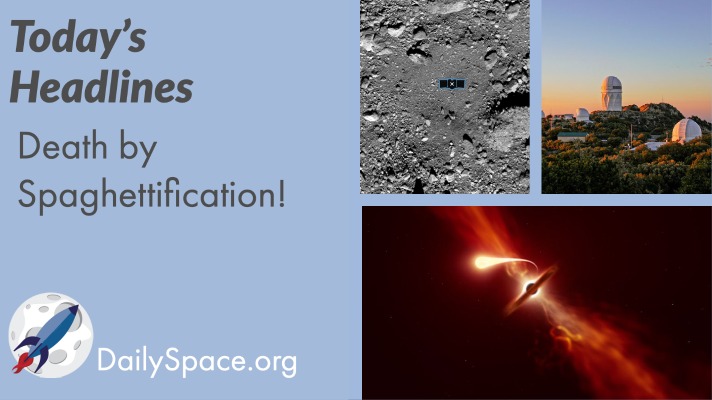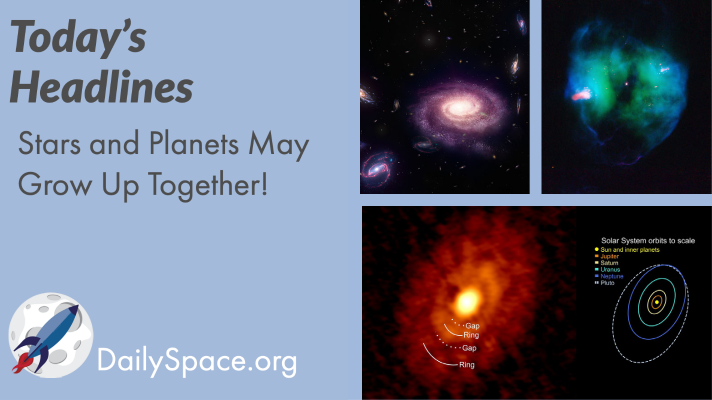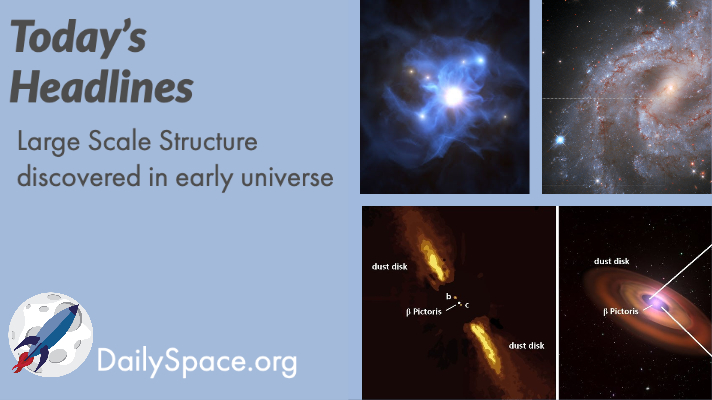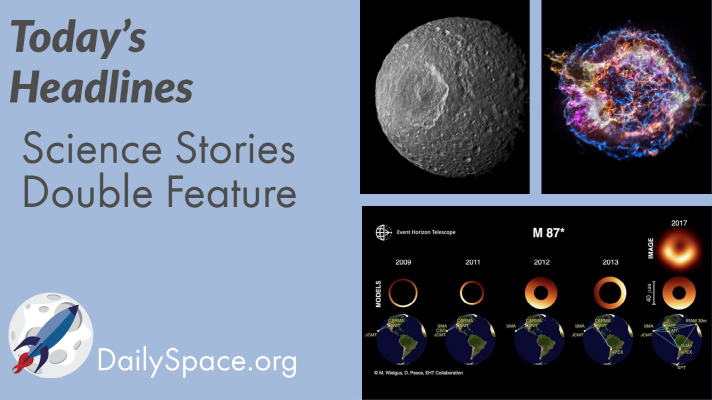
Oct 13, 2020 | Asteroids, Bennu Mapper, Daily Space, Gemini South, Observatories, OSIRIS-REx, Stars, Supermassive Black Holes
Join us for a look at today’s top story: ESO telescopes captured the last moments of a star being destroyed by a black hole in a tidal disruption event. Plus scientists are studying Bennu’s surface to get ready for next week’s touch and go sample collection, and NOIRLab begins the process of restarting telescope operations at several observatories around the world.

Oct 9, 2020 | Daily Space, Exoplanets, Galaxies, Observatories, Planetary Nebulae, Planets, Star Forming Region
New images taken with the ALMA Observatory show a young proto-stellar disk with the rings and gaps of planetary formation growing together, once again challenging our preconceptions. And other research into stellar formation adds heavy metals to the mix to match models to observations. Plus an old, metal-poor galaxy halo.

Oct 7, 2020 | Daily Space, Gemini North, Mars, Nebulae, Star Forming Region, Supermassive Black Holes
Research from our home Planetary Science Institute shows that the dune fields on Mars provide solid evidence for lithification and burial. Plus, Carina Nebula has been imaged with adaptive optics and looks amazing! And we take a look at the winners of this year’s Nobel Prize in Physics.

Oct 6, 2020 | Cosmology, Daily Space, Exoplanets, Galaxies, Quasar, Supernovae
Using huge telescopes, researchers have discovered a Large Scale Structure of six galaxies around a seventh galaxy with a supermassive black hole, back in the first billion years of the Universe. Plus Hubble captures a time-lapse of a fading supernova and beta Pictoris c is directly imaged.

Sep 28, 2020 | Asteroids, Daily Space, Mars, Milky Way, Quantum, Saturn, Supermassive Black Holes
Join us today for a first-ever double feature episode. Dr. Pamela and Beth will cover the latest in astronomy and planetary science.

Sep 15, 2020 | Cosmology, Daily Space, Dark Matter, Galaxies, Guest Interview, Supernovae
Join us today as we look at how the Hubble Telescope may have solved the dark matter discrepancy. A research team has found a unique Type 1a supernova in the super-Chandrasekhar group of novae. Plus, all those extreme galaxies (large and small) seem to be in dense regions with a lot of interactions. Afterward, were joined by astrobiologist Dr. David Grinspoon to talk about his research into potential life on Venus.








 We record most shows live, on Twitch. Follow us today to get alerts when we go live.
We record most shows live, on Twitch. Follow us today to get alerts when we go live.